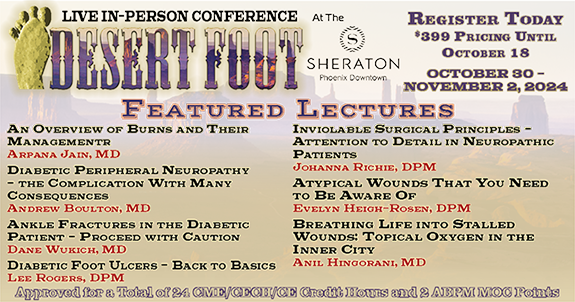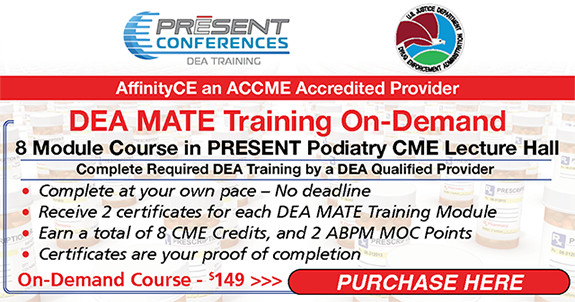
Practice Perfect 933
What Should I Read? Part 2:
The Big 5 Articles on Foot Function
What Should I Read? Part 2:
The Big 5 Articles on Foot Function

Welcome back to our short series to answer the important question, “What should I read?” Last week I recommended using your daily experiences to guide you on what to read, use active methods to synthesize what you read for longer retention, and to use your available resources in the most efficient ways. Today, as promised, we’re going to discuss a set of five landmark cadaver studies that I’m calling The Big 5. These five studies have provided important evidence on foot function, and all podiatrists should read and understand them to be truly well read and up on our field. To that end, we’re going to do a quick high-yield journal club to get to know these important articles. Take them seriously, think deeply about what they say, and you will understand high quality research that you will be able to apply to your daily clinical decision-making.
The Articles
Between 1999 and 2005, researchers from the Northwest Surgical Biomechanics Research Laboratory in Seattle, Washington performed a series of cadaveric studies examining various aspects of foot biomechanics.
All of the studies used a 3-D radio wave tracking system to analyze the motion of specific joints in feet mounted within a custom-made loading frame. The researchers were able to load the feet as well as apply tension forces across muscles in the leg to simulate weightbearing stance (closed kinetic chain measurements for all of the studies except for the 4th).
Let’s make a few comments about the methodology and then move directly on to the outcomes and their significance. First, don’t forget about the limitations of a cadaver study. Since they’re not living human extremities in the studies, we have to be a little cautious with extrapolating the outcomes to our patients (ie there are limits to the external validity of the studies). However, these studies are really not ethically possible to do on live humans (at least not with most of our current technologies). For example, you can’t just fuse the joint of an otherwise asymptomatic person to see what happens. We should think of this as a “model” of foot function, not actual foot function. Second, these studies are kinematic in nature, meaning they’re looking at joint motion and positions, rather than the forces going through those joints. There is nothing at all wrong with this, just something to keep in mind. Third, I’ll emphasize that these are stance phase studies, meaning the authors didn’t simulate the other phases of gait, such as what occurs during push off. Something different may occur during the other periods of gait that are not studied. This is very difficult to do since simulating gait is much more complicated in the lab and has been, for many, a prohibitively difficult thing to do. Again, you shouldn’t discard the results based on this; simply keep in mind these limitations.
Now, let’s get to what they found!
The peroneus longus stabilizes the arch!
In the first study, they found that the peroneus longus caused an eversion and slight plantar flexion of the first metatarsal. The same thing occurred with the medial cuneiform. The navicular everted and slightly dorsiflexed with increased p. longus tension, and the talus supinated. Increased peroneus longus tension, then, leads to increased stability of the medial column (a “locking mechanism” in their words), tightening the medial arch ligaments, causing a “reciprocal supination” (again their words) of the hindfoot. Due to the stable arch configuration, this would, they argue, counteract hypermobility.1
Significance: The peroneus longus is an important component of arch stability, hallux limitus, and how much mobility the medial arch has. A P. longus lengthening may be a good option to treat disorders of excessive 1st metatarsal plantar flexion. This decreases, in my mind, the importance of the midtarsal position and the diverging joint axis concept of Root et al.
The peroneus longus is an important component of arch stability
Metatarsus primus varus leads to hypermobility (not the other way around)!
The second study found the Windlass mechanism to normalize when first ray position was normal. Said another way, if the first metatarsal was abnormally adducted (metatarsus primus varus) and dorsiflexed, with the sesamoids lateral to the first metatarsal head, dorsiflexing the hallux did not lead to appropriate activation of the Windlass mechanism via the plantar fascia. With appropriate alignment of the 1st metatarsal, the amount of sagittal motion of the other bones and joints of the medial column decreased.2
Significance: A normal first MTP joint position is required for medial column stability, and as the first metatarsal deviates medially, hypermobility increases. It’s not illogical to assert, then, that hallux valgus leads to hallux limitus (very true in this clinician’s experience). Abnormal first ray position also leads to dysfunction of the Windlass, and one may conclude that plantar fascial pain may be affected by 1st MTPJ dysfunction (an extrapolation on my part and not a studied outcome here). Treat the first ray when treating plantar fasciitis. These results also argue for surgical realignment of the first metatarsal and the importance of realigning the sesamoids when repairing hallux valgus deformities. Bunionectomies are arch stabilization procedures!
Bunionectomies are arch stabilization procedures
The Lapidus procedure improves peroneus longus function!
When the researchers simulated fusion of the 1st tarsometatarsal joint and the medial and intermediate intercuneiform joints using two parallel pins, they found an increased ability of the peroneus longus to evert and abduct the medial cuneiform. The navicular position did not change significantly but the talus did significantly dorsiflex.3
Significance: Since we already discussed that the peroneus longus works to stabilize the arch (the result of the first study), we can extrapolate the results of this study to create the following logical syllogism: if the Lapidus procedure improves peroneus longus function, and the peroneus longus stabilizes the arch, then the Lapidus is an arch stabilizing procedure!
The Lapidus is an arch stabilizing procedure
Sagittal plane movement of the medial arch does NOT arise only from the 1st MCJ but rather a combination of the 3 joints!
If one could have a “favorite” study, this would be mine because it helps us understand from where medial arch movement actually arises and also discounts the first ray excursion test we’re taught in school (see Practice Perfect 748 - Stop Using the First Ray Excursion Test for a more detailed discussion). These researchers found that when selectively fusing the first metatarsocuneiform, naviculocuneiform, and talonavicular joints, the remaining amount of sagittal plane motion available was 41%, 50%, and 9%, respectively. This is the medial arch equivalent of the classic Astion article5 where they selectively fused rearfoot joints.4
Significance: Medial column sagittal motion is a “blend” (again, their word – and a good one!) of motions from the three joints. Fusing each of these joints decreases the amount of mobility of the medial column. Additionally, adding in an intercuneiform fusion has an even greater effect than individual joint fusions, which the authors hypothesize as due to decreased naviculocuneiform motion through stabilization of the cuneiforms.
Increased pull of the Achilles on the foot leads to arch flattening and decreased peroneus longus function.
The authors found that when they increased the pull of the Achilles by 0%, 30% and 60%, the first metatarsal increasingly inverted and dorsiflexed; the medial cuneiform increasingly inverted, dorsiflexed, and abducted; the navicular progressively inverted; and the talus increasingly plantarflexed and adducted. None of these findings were found to be statistically significant. The authors stated this also decreased peroneus longus function and its stabilizing effect on the arch.6
Significance: Gastrocnemius equinus is a contributor to pathological arch function due to its “dampening” effect on the peroneus longus locking mechanism.
Now, as I mentioned, I’m a real fan of this group of papers, but I’m going to get critical with this last one. It’s way too complicated to discuss in detail, but I think the researchers got this one wrong. First, none of the findings were statistically significant – the Achilles actually had little effect on these normal feet. Second, they didn’t actually experimentally look at the effect of increased Achilles load on peroneus longus function. They indirectly extrapolated this from the decreased eversion seen in the experiment and then stated a tight Achilles decreased peroneal function. Simply put, this study did not support the conclusions they made.
The reason they didn’t see significant results is because gastrocnemius equinus in the neurologically normal population doesn’t exist. Abbreviating to a great extent a hypothesis paper Ben Kamel, DPM and I published in 20207, the normal gastrocnemius muscle works on an abnormal foot to create the effects we see and not vice versa. If our intrepid researchers repeated this experiment on abnormal feet (say, by sectioning certain ligaments to destabilize the foot) they would have seen the very significant effects of increased Achilles loads on the foot. For anyone interested, we discussed this in the paper I mentioned and in Practice Perfect 299 - Not What they Seem Part 1 and Practice Perfect 300 - Not What they Seem Part 2.
On that note, we’ll call it a day! There’s so much here to consider and to apply to your practice of podiatric medicine and surgery, more than we can include here. So I urge you to read these excellent researcher’s articles and consider for yourself. We’ll discuss other important papers in upcoming Practice Perfect issues.
Best wishes.

Jarrod Shapiro, DPM
PRESENT Practice Perfect Editor
[email protected]

- Johnson CH, Christensen JC. Biomechanics of the first ray part I. The effects of peroneus longus function: A three-dimensional kinematic study on a cadaver model. J Foot Ankle Surg. 1999 Sep-Oct;38(5):313-321.
Follow this link
- Rush SM, Christensen JC, Johnson CH. Biomechanics of the first ray. Part II: metatarsus primus varus as a cause of hypermobility. A three-dimensional kinematic analysis in a cadaver model. J Foot Ankle Surg. 2000 Mar-Apr;39(2):68-77.
Follow this link
- Bierman RA, Christensen JC, Johnson CH. Biomechanics of the first ray. Part III. Consequences of Lapidus arthrodesis on peroneus longus function: a three-dimensional kinematic analysis in a cadaver model. J Foot Ankle Surg. 2001 May-Jun;40(3):125-131.
Follow this link
- Roling BA, Christensen JC, Johnson CH. Biomechanics of the first ray. Part IV: the effect of selected medial column arthrodeses. A three-dimensional kinematic analysis in a cadaver model. J Foot Ankle Surg. 2002 Sep-Oct;41(5):278-285.
Follow this link
- Astion DJ, Deland JT, Otis JC, Kenneally S. Motion of the hindfoot after simulated arthrodesis. J Bone Joint Surg Am. 1997 Feb;79(2):241-246.
Follow this link
- Johnson CH, Christensen JC. Biomechanics of the first ray part V: The effect of equinus deformity: A 3-dimensional kinematic study on a cadaver model. J Foot Ankle Surg. 2005 Mar-Apr;44(2):114-120.
Follow this link
- Shapiro J, Kamel B. Passive Muscular Insufficiency: The Etiology of Gastrocnemius Equinus. Cli Podiatr Med Surg. 2020 Jan;37(1):61-69.
Follow this link




























Comments
There are 0 comments for this article